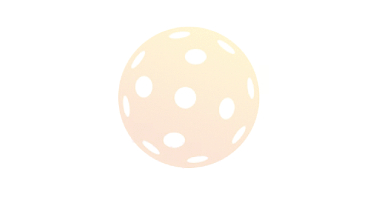If you play with a strong partner in doubles then you may find yourself becoming complacent by letting them take every ball that flies toward their forehand.
While it is typically easier for most players to use their forehand, if the ball is coming to your side of the court, letting your partner take the shot/poach can cause them to become fatigued more quickly or leave them out of position for the return volley.
To counter these problems, it's important to learn how to adequately utilize a backhand stroke. Those coming from a tennis background are usually more familiar with this tactic, but the motion may feel unusual for those without an extensive racquet sport background.
With the help of pro player and trainer Deb Harrison, here are a few ways to easily improve your backhand:
There are two types of backhand you can utilize: topspin or underspin/slice. The only difference between them when it comes to setup is how you initially position your paddle.
For a right-handed player to produce topspin (lefties should perform the following in reverse), place your right thumb against your left hip, causing your shoulder to rotate toward the net, take a step forward, then allow your arm to follow through. Your left hand should also extend behind you to provide additional balance.
For underspin, you simply start the swing of your paddle a bit higher—near your chest rather than hip. Prepare your positioning early, then allow your paddle to drop down to meet the ball before following through.
A few common mistakes to avoid:
- Ensure your shoulder is turned before hitting the ball. So long as your paddle is near your hip or chest, your shoulder should be facing the net and properly aligned for the shot.
- Hit the ball in front of your forward-positioned knee. If you try to take the ball at or behind your hip, then you won't be able to generate any power or may send the ball in the wrong direction.
- Follow through on your swing by drawing your paddle hand toward your target and letting your opposite arm extend behind you. This ensures proper placement and also helps you avoid becoming unbalanced.
With enough practice you'll be able to take any ball that heads your way on the court regardless of whether you need to use your forehand or backhand. Keep these tips in mind and don't let anyone catch you off guard!
Share Product:
SHARE THIS:


